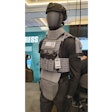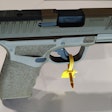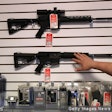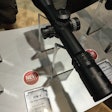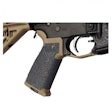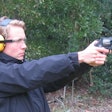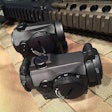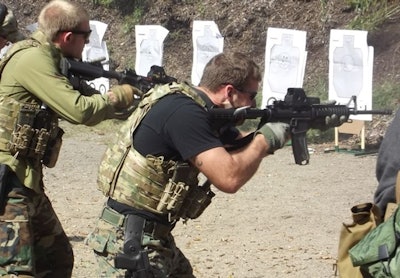 Photo: Scott Smith.
Photo: Scott Smith.
A typical two-day pistol-carbine course splits off one day for handgun and a second for carbine. At Redback One, the handgun or long gun are operated as the scenario dictated.
This is done, because training director Jason Falla believes your primary weapon is your long gun. You transition to your handgun only if you're at close range or to getting your long gun back in the fight isn't a simple fix. Falla emphasizes that at CQB (close quarters battle) distances, you'll transition to your handgun immediately if the long gun should go down.
You do this because it's faster to transition to your handgun than it is to attempt to fix the carbine. Once you've moved to cover and have cover from a teammate, then you can get your long gun back up and running; then continue the operation.
Falla, who you may recognize from his appearances on the Sportsman Channel's "Tactical Impact" and "Tactical Arms, offers more than just firearms training at Redback One.
The company offers security consulting, personal protection training, and open-hand combatants. It produces targets and consults on equipment. Redback One is also working to have various courses accepted for law enforcement P.O.S.T. certification.
Jason Falla spent six years in the Australian Army's Commando Regiment and six years in the Special Air Service Regiment. He has seen numerous combat deployments in the War on Terror, giving him a wealth of real-world experience to draw from. He received years of training in mountain operations, CQB, hostage rescue, and numerous counter-terror skills. He also shares a wealth of combat medical skill. He's an instructor qualified by the NRA, H&K, and Safariland for numerous disciplines. He has used all of these skills for the last five years to develop training programs for military, law enforcement, and civilians.
The two-day course begins with a discussion of the limitations of your handgun and carbine, support gear for each, and your application of the weapon system such as police, military, or personal protection. This let the class and Jason know why each of us was in the course, what direction the course would run, and what the goals for the class would be.
Jason uses a printed course plan, and each student received a copy. This lets you know what you were going to be doing and approximately when. This was the first time I attended a mobile training course where I knew what was on the agenda (beyond just shooting). The outline rivaled many well-known fixed academies. Jason's attention to detail reflects his desire to put forth the best product possible.
Next on the schedule was to ensure the carbines were zeroed. When using an AR platform, Jason is an ardent proponent of the 200-meter zero. For expedience, you'd zero the weapon at 50 yards. If all things play out, you'll be near dead on at 200 meters. You can verify this and make corrections. The reason for this zero is the flight of the bullet—from 50 to 200 meters you'll be within a couple of inches of point of aim, point of impact. At distances closer than 25 yards, you'll have a hold off of approximately three inches low from point of aim. This is simply the relation of the barrel and sights. The 200-meter zero gives you the least hold off over the useful ballistics of the .223 Rem/5.56 NATO round in a tactical environment.
From there, we grounded the long guns and went to work with the handguns. Shooting started out a five to seven yards, and we shot bulls-eye drills. This is simply shooting a tight group on the selected target. By shooting this drill, you will gain a quick diagnosis of a myriad of shooting issues such as heeling the weapon, slapping the trigger, or over gripping. You'll find this is also a good warm up during your own training. Mastering these simple tasks makes you a more proficient operator of your equipment.
These basics led into explanations of the manipulation of the weapons, including palm up, palm down, and palm neutral. Palm up is the position where you reload—it allows you to see the leading edge of the magazine well for a smooth positive reload without blocking your vision. Palm down is used to clear weapons—it gives you a quick visual check of the weapon's chamber area, allowing you to diagnose a jam or double feed and take appropriate action. Palm neutral is the shooting position.
During the two days, we did precision drills, speed drills, transition drills, non-dominant hand shooting, basic shooting on the move, and even turns to engage targets. While we discussed and worked on handgun stoppages, we went into great detail on clearing AR stoppages.
Because most AR stoppages are "catastrophic," and take your best weapon out of the fight, you need to know how to recognize, diagnose, and correct them. We even discussed the top operator-induced failure—lack of lubricant. ARs run best when oiled, and not wiped dry as the military taught us. This section of the class was worth the price of admission.
Redback One's "Two-Day Pistol/Carbine" will give you a lot more information than I can present in a short piece. It's not a basic class, you'll need to know how to run your long gun and handgun fairly well. You will learn skills that will help you survive should you have to deploy your weapon.
Additional information can be found online at the Redback One or Grey Group Training Web sites.










